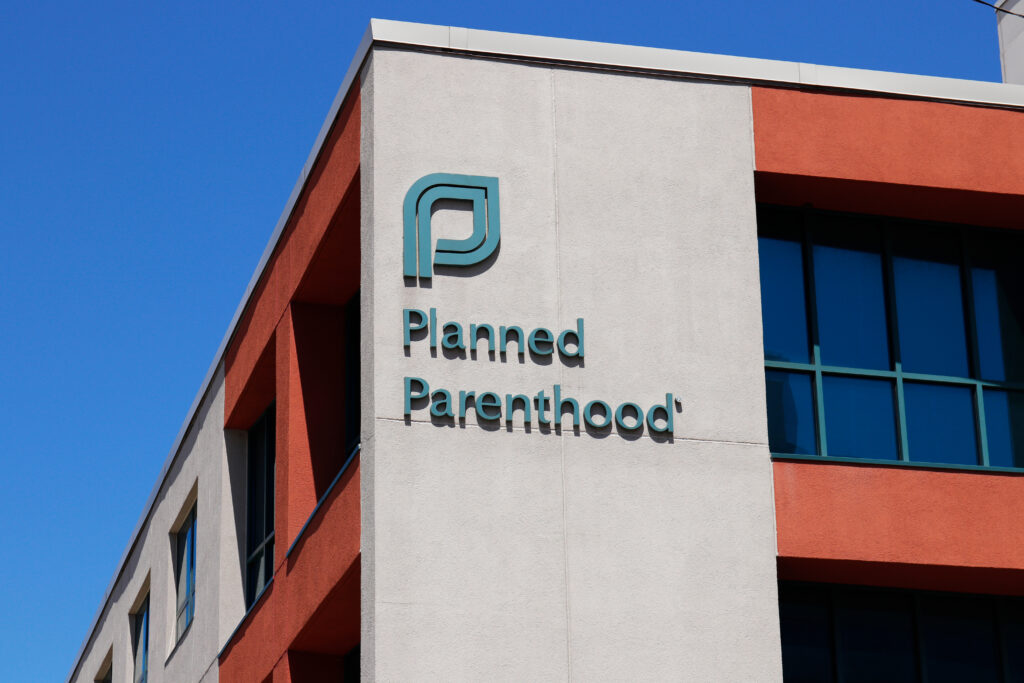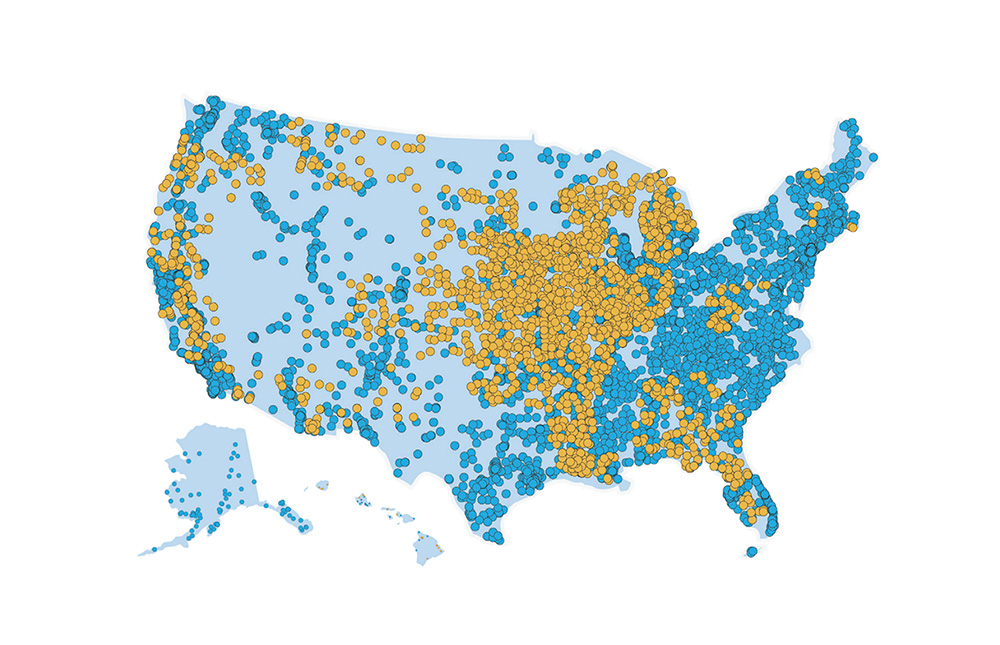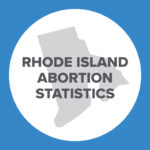Abortion Reporting: District of Columbia (2020)
Abortion data for the District of Columbia is available in the U.S. Centers for Disease Control’s 2020 abortion surveillance report. D.C. continues to have one of the highest abortion rates in the country.
Statistics and Changes in D.C. Abortions, 2019-2020

The report does not include information on Planned Parenthood’s D.C. abortion market share.
Abortion Totals and Trends
The most recent abortion statistics published by the District of Columbia are from 2015. However, D.C. has shared more current information with the Centers for Disease Control and Prevention (CDC) to be included in the CDC’s national abortion surveillance report for 2020. According to the data D.C. shared with the CDC, there were 4,416 abortions reported in the District in 2020, down three percent from 4,552 in 2019 and down 7.4 percent from 4,771 in 2018. Conversely, chemical abortions increased by 18 percent from 2,000 in 2019 to 2,358 in 2020 (Fig. 1). However, estimates from the Guttmacher Institute’s abortion center survey indicate these figures are likely an extreme undercount of total abortions.
Until recently, abortion reporting in the District of Columbia was voluntary, and D.C.’s reports only contained data on abortions performed on resident women. In 2018, D.C. amended its vital statistics code to require abortion reporting and expected to begin receiving reports by late 2019. D.C. has not yet published an annual abortion report since the vital statistics code was updated.
It appears that in most years, D.C. sent the CDC all of its abortion data, including nonresident abortions. For 2015, though, D.C. only provided resident abortions, and the District neglected to share any 2016 data with the CDC. The reported uptick in D.C. abortions in 2017 and 2018 may have been the result of growing awareness of abortion reporting, or it may have been impacted by changes in the various abortion centers operating in the District and their abortion volumes and decisions regarding whether to report.
The CDC estimates that D.C.’s 2020 abortion rate was 23 abortions per 1,000 women of childbearing age, down 3.7 percent from a rate of 23.9 in 2019. The Guttmacher Institute’s calculations highlight the extreme underreporting on the part of D.C. to the CDC. Based on numbers provided to Guttmacher by D.C. abortion centers, Guttmacher calculated that the 2020 D.C. abortion rate was 48.9. This estimation is more than double the abortion rate that D.C. reported to the CDC. Likewise, D.C.’s underreporting is also highlighted by the fact that Guttmacher estimated that D.C.’s abortion total (9,410) in 2020 is also double what D.C. reported to the CDC. In the national context, Guttmacher’s estimated D.C. abortion rate is 3.4 times higher than the 2020 national abortion rate of 14.4 (Fig. 2).
State Report Summary
All the information found in this section is from the 2020 CDC figures.
A minority of the abortions reported in D.C. (29 percent) were performed on D.C. residents. Seventy-one percent were obtained by non-residents, including 44 percent of the total D.C. abortion count being obtained by Maryland residents and 24 percent being obtained by Virginia residents. Three percent of the abortions were performed on women from other states.
Nine percent of D.C. abortions were performed on girls ages 19 and younger, including 11 abortions performed on girls under the age of 15. Twenty-nine percent of the abortions were on 20- to 24-year-olds, and 31 percent were on women ages 25 to 29. However, D.C. has a significantly larger population of women in their later twenties than in their early twenties, and the abortion rate for women ages 20 to 24 (45.1 abortions per 1,000 women) was much higher than the abortion rate for women ages 25 to 29 (30.8). Twenty-eight percent of the abortions were on women in their thirties, and three percent were on women aged 40 or older.
In 2019 more than half the abortions (52 percent or 2,365 abortions) were performed on non-Hispanic black women, 18 percent were performed on non-Hispanic white women, and 11 percent were on non-Hispanic women of other races. Sixteen percent of the abortions were performed on Hispanic women, and three percent were on women whose race was not reported. CLI estimated that D.C.’s 2019 black abortion rate was 32.4 abortions per 1,000 women of childbearing age, over three times the white rate. These trends mirrored previous CDC surveillance reports on D.C.’s abortion data by race. In 2020, 15 percent of the abortions were performed on non-Hispanic white women, just 0.7 percent (31 abortions) on non-Hispanic black women, 59 percent on non-Hispanic women of other races, and 17 percent on Hispanic women. Nine percent of the abortions were performed on women of unknown races. The drastic change in the number of non-Hispanic black abortions may partially be attributed to missing data for the nine percent of women who had an abortion in D.C. whose race went unreported, but this cannot account for the entire difference from 2019. It is possible that non-Hispanic black abortions were misallocated to the “non-Hispanic other” category, or simply underreported, given the District’s history with flawed abortion reporting.
Thirty-nine percent of the District’s abortions were first-trimester surgical procedures, and seven percent were surgical abortions performed after 13 weeks of gestation. Fifty-three percent were chemical.
Abortion Centers
The District of Columbia did not report the specific gestational ages at which abortions were performed, but several late-term abortion centers operate in the District. A Planned Parenthood mega-center performs abortions up to 19 weeks and six days of gestation, while Washington Surgi-Clinic advertises abortions through “27 plus weeks.” DuPont Clinic, a referral center for high-risk abortion cases, performs abortions through 31 weeks of gestation for any reason. Capital Women’s Group, associated with infamous abortion doctor Steven Brigham, advertises abortion up to 36 weeks of gestation. Additionally, pro-choice groups report that a D.C. hospital performs abortions through the second trimester.
Multiple abortion websites mail abortion drugs to D.C. women.
State Ranking
In 2016, CLI evaluated state abortion reporting nationwide, and the District of Columbia’s reporting was ranked at 45th best. To improve its reporting, D.C. could publish reports on a faster schedule. In addition, D.C. could ensure that its new reporting rule is enforced and that all abortions are reported. Due to the number of late-term abortion centers in the District, D.C. could collect and report information on complications caused by abortions and the grounds for these abortions. D.C. could make sure that the data they give to the CDC is accurate. The U.S. Congress has authority and public responsibility to obtain D.C.-CDC cooperation on abortion reporting and to ascertain why the District has become a haven for late-term procedures that occur nearly until birth.
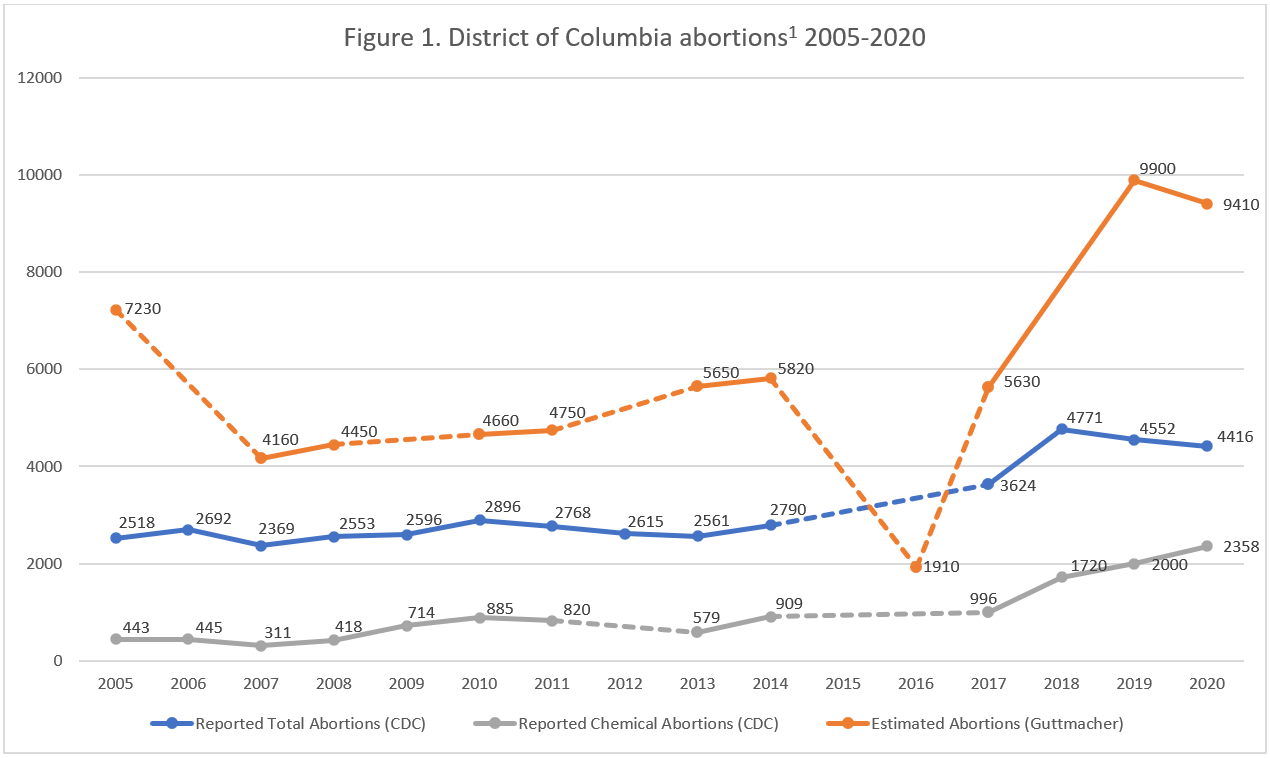
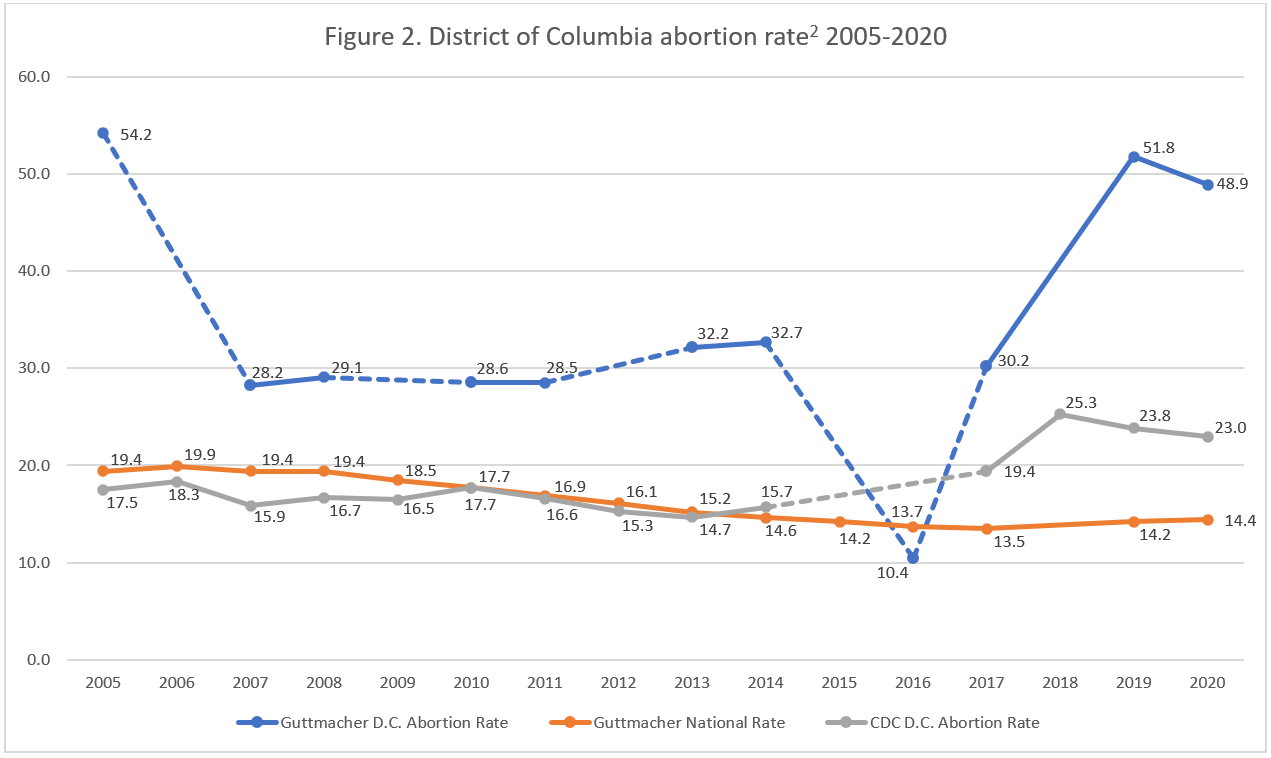
- Abortion totals were taken from the CDC reports. D.C. did not report abortions performed on nonresidents in 2015 and did not report any abortion data in 2016.
- Rates were calculated by CLI using population estimates from the Centers for Disease Control and Prevention. The rates were calculated using the following formula: (total number of abortions reported in District of Columbia ÷ number of resident women ages 15-44) x 1,000. Rates were calculated by Guttmacher using the same formula. Estimates for 2005-2009 are intercensal estimates of the July 1 resident population. Estimates for 2010-2020 are Vintage 2020 postcensal estimates of the July 1 resident population. Estimates were produced by the U.S. Census Bureau and the National Center for Health Statistics.





















